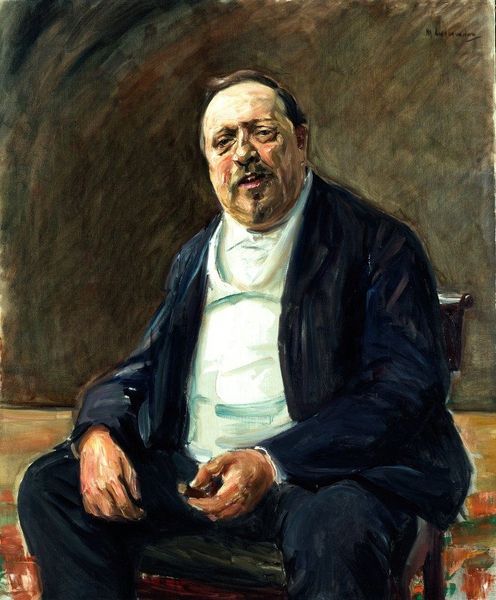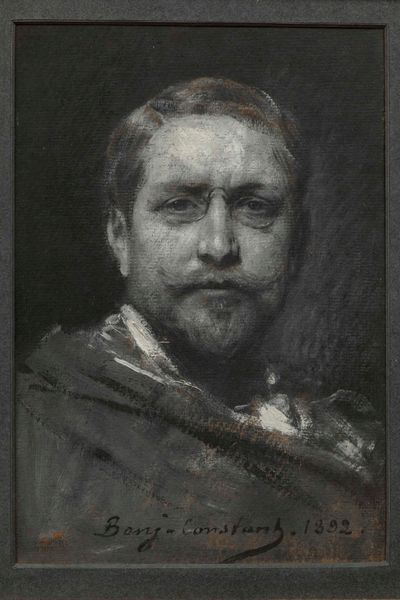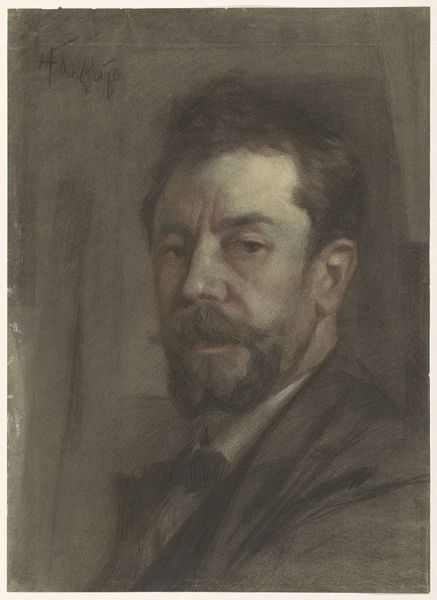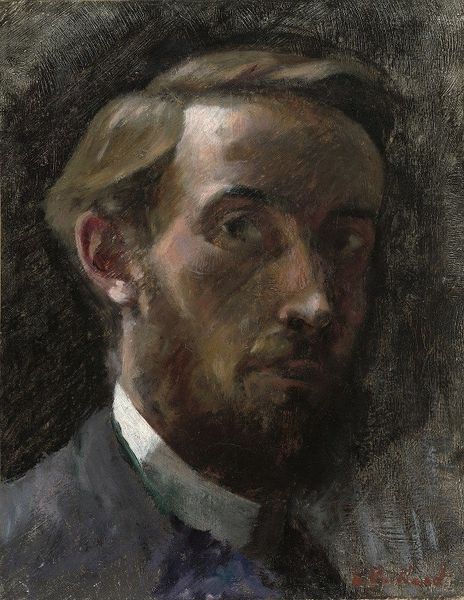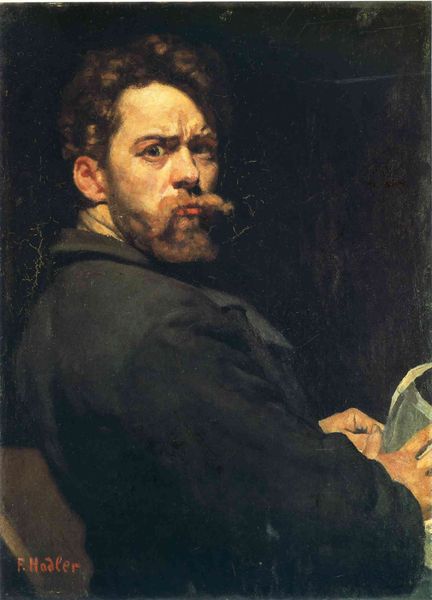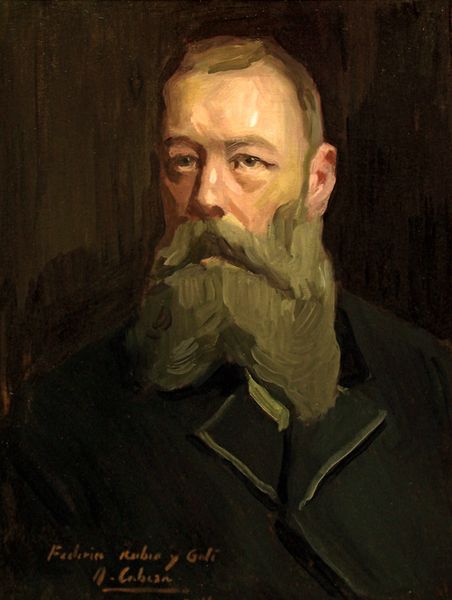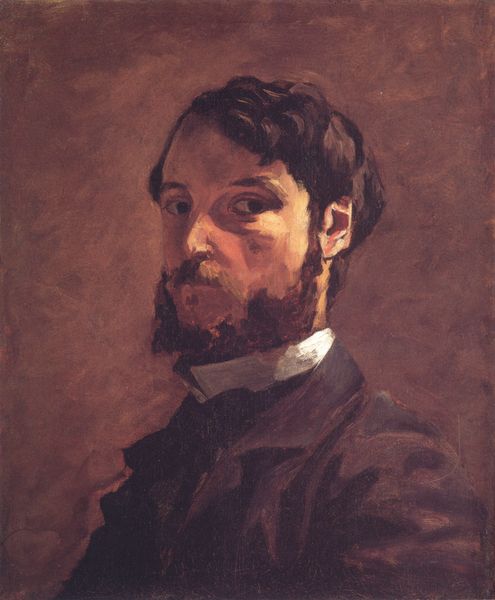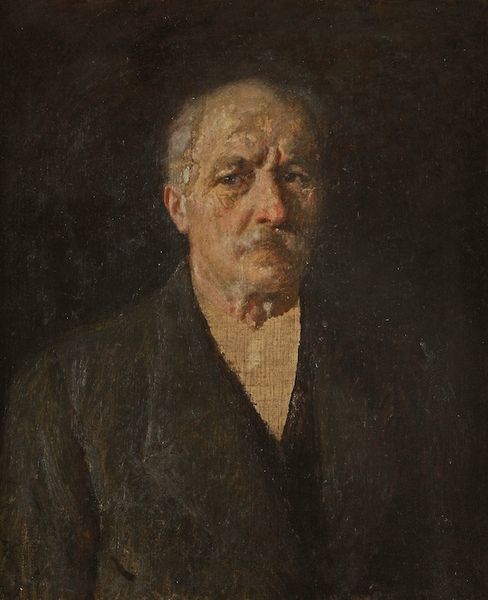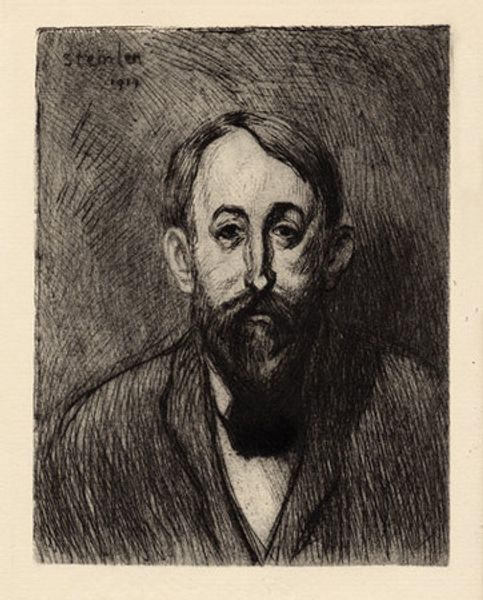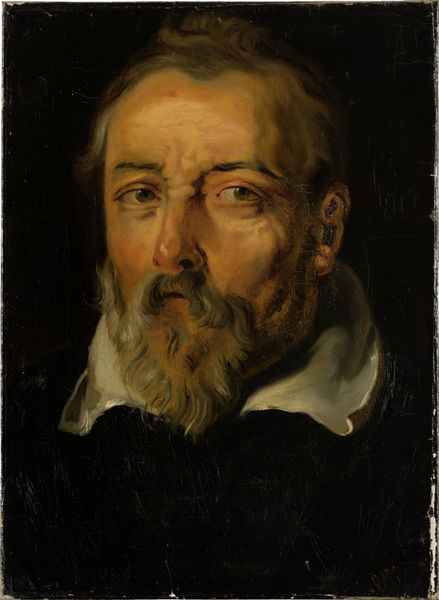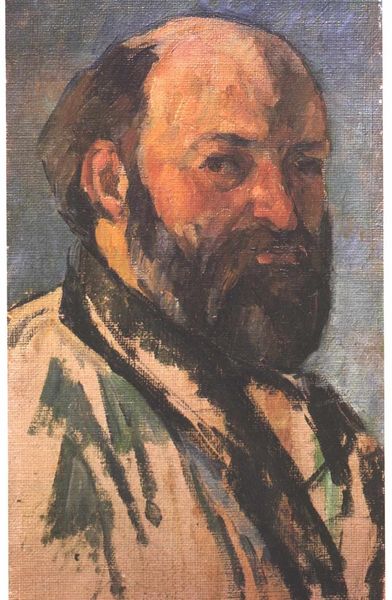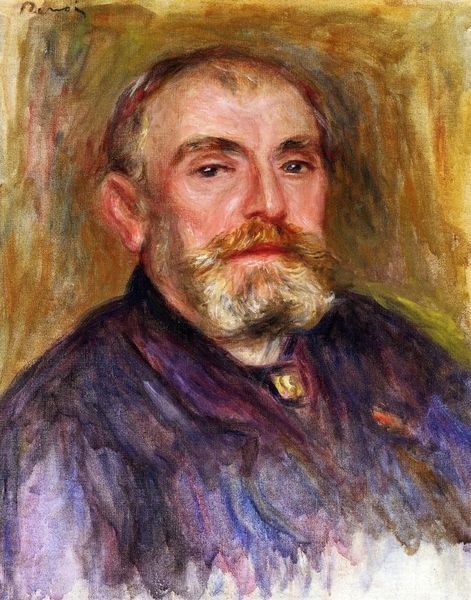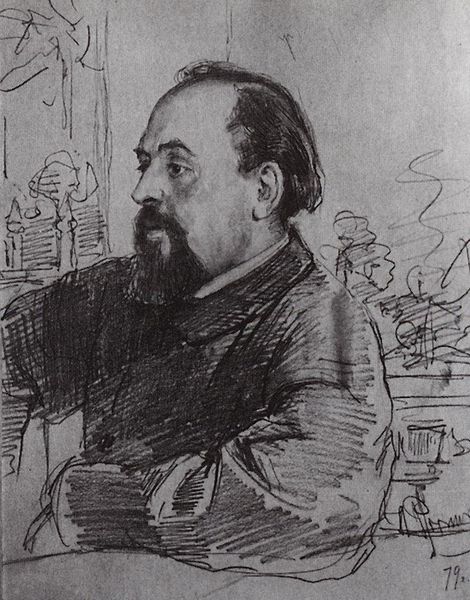
Copyright: Public domain
Editor: Here we have Thomas Eakins' "Self-portrait" from 1902, rendered in oil paint. I’m struck by the somber tones and the loose brushwork. It gives the painting a very introspective mood. What do you see in this piece from a formal perspective? Curator: Indeed. Focusing on the pictorial elements, note how Eakins utilizes a limited palette dominated by earth tones, establishing a chromatic unity. Observe the contrast, particularly how the artist captures light playing across the face, highlighting the planes and structure. How do you perceive the relationship between these lit areas and the darker background? Editor: It's as if the background is receding, making the face even more prominent and drawing attention to his expression. The darkness seems almost… oppressive? Curator: Precisely. This chiaroscuro, the strong contrast between light and dark, not only defines the form but also evokes a particular feeling, or affect, in the viewer. Consider the application of paint; the visible brushstrokes contribute to a sense of texture and movement. How does that affect your reading of the work? Editor: It feels less static, more immediate. It’s almost like seeing the process of the painting itself. Like a snapshot. Curator: Well observed. Eakins departs from academic portraiture by emphasizing the materiality of the paint and process. Did the piece's structure change your perception of its emotional weight? Editor: Yes, absolutely! Seeing it through a formal lens helped me to understand how the techniques created that somber mood, it’s not just the subject matter, but the how of it too. Thank you! Curator: And understanding the how enhances our appreciation, right? By engaging with the formal components, we unlock a deeper engagement with the work of art.
Comments
No comments
Be the first to comment and join the conversation on the ultimate creative platform.

